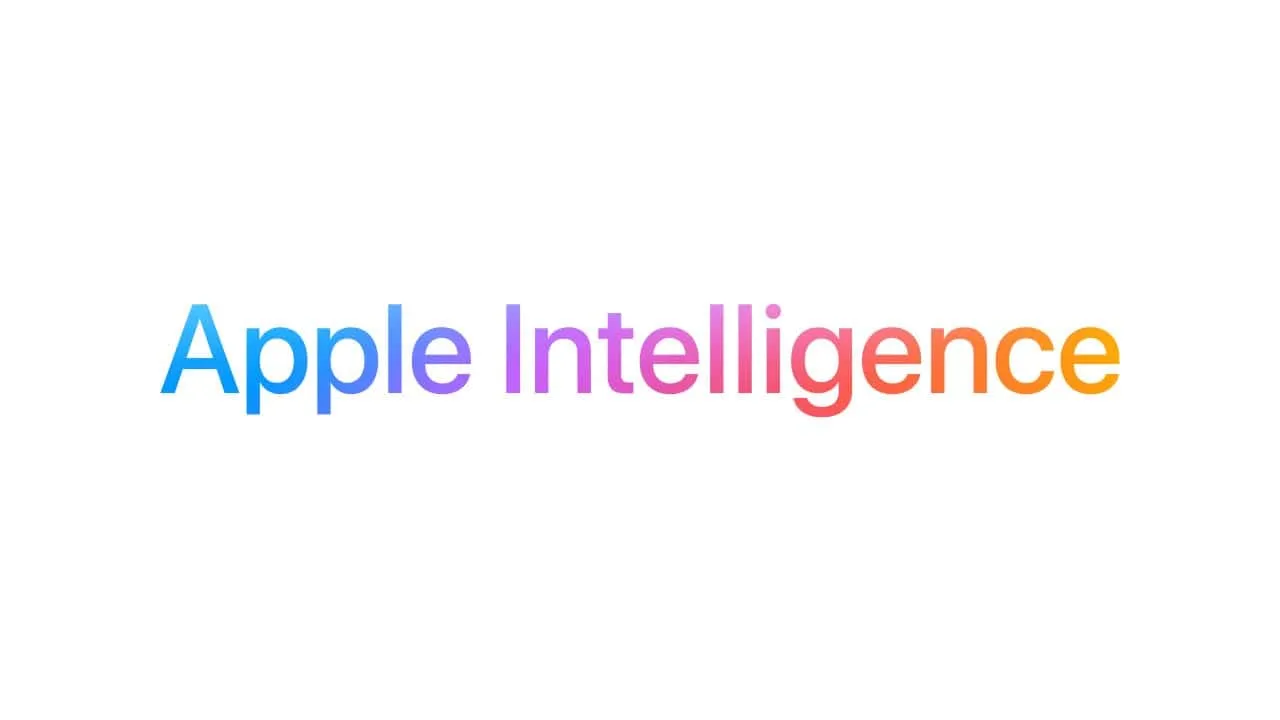
Apple's annual Worldwide Developers Conference (WWDC) in 2024 unveiled a significant step forward in on-device artificial intelligence with the introduction of Apple Intelligence. This suite of AI features promises to enhance user experiences across iPhones, iPads, and Macs, but its initial availability will be limited to specific devices. This article delves into the capabilities of Apple Intelligence, explores the rationale behind the hardware requirements, and examines the implications for the future of AI on Apple devices.
Apple Intelligence: A Glimpse into the Future of On-Device AI
A Suite of Powerful AI Features
Apple Intelligence signifies Apple's commitment to integrating advanced AI functionalities directly into its devices. Users can expect to experience:
- AI-powered Siri: Siri, Apple's virtual assistant, is poised to receive a significant upgrade thanks to Apple Intelligence. This translates to a more natural and intuitive user experience, with Siri better understanding context and user intent.
- Enhanced Text Tools: Apple Intelligence empowers users with a suite of tools to elevate their writing experience. Features like real-time rewriting, advanced proofreading, and comprehensive summarization will be integrated system-wide, accessible across various apps like Mail, Notes, Pages, and even third-party applications.
- Image Playground: This innovative feature ushers in a new era of creative expression within apps. Image Playground leverages AI to generate images based on textual prompts and suggestions. Users can create and utilize these images across various platforms, opening doors for more dynamic communication and visual storytelling.
Hardware Considerations: Balancing Innovation and Accessibility
So, the initial rollout of Apple Intelligence will be limited to specific devices, sparking discussions about accessibility and hardware requirements. Apple executives shed light on the rationale behind this decision during a WWDC talk show. John Giannandrea, head of AI/machine learning at Apple, emphasized the computational demands of running large language models, the core technology behind features like AI-powered Siri. This process, called inference, necessitates significant resources in terms of device bandwidth, Neural Engine capabilities, and processing power to ensure a seamless and efficient user experience. He further clarified that while running these models on older devices might be technically possible, the resulting sluggish performance would render the features impractical.
Greg Joswiak, Apple's marketing chief, addressed concerns about the limitations being a sales tactic. He asserted that Apple prioritizes offering the best possible user experience and that extending compatibility to older devices wouldn't be strategically beneficial if it compromised functionality.
Craig Federighi, software engineering chief, elaborated on the specific hardware requirements. The iPhone 15 Pro and Pro Max, equipped with the A17 Pro chip and its 16-core Neural Engine, offer a significant performance leap over previous models. Additionally, all compatible devices boast at least 8GB of RAM, another crucial factor in ensuring smooth operation. For Macs and iPads, the M1 chip or newer iterations are required.
While the initial rollout might not be universally accessible, users of non-compatible devices can anticipate broader availability in the future. Apple's commitment to providing ongoing software updates implies that iOS 18, which will host Apple Intelligence, will likely be compatible with older iPhones, potentially as far back as the iPhone XR released in 2018.

Looking Ahead: The Future of On-Device AI
So, Apple Intelligence represents a significant milestone in the development of on-device AI. It empowers users with powerful tools for communication, creativity, and productivity. While the initial hardware limitations might pose a temporary hurdle for some users, Apple's focus on performance optimization and user experience is understandable. The company's ongoing investment in AI research and development suggests that future iterations of Apple Intelligence will likely become more accessible as hardware capabilities continue to evolve.
Beyond the Technical: The Broader Impact of AI on User Experience
The introduction of Apple Intelligence raises pertinent questions about the broader impact of AI on user experience. One key consideration is the potential for bias within AI models. Apple has a responsibility to ensure its AI features are developed and implemented in a way that is fair, unbiased, and respectful of user privacy. Additionally, the integration of AI raises questions about human-computer interaction. While features like AI-powered Siri aim to enhance user control, it's crucial for Apple to maintain a user-centric approach, ensuring AI complements rather than replaces human decision-making.
The Potential of Apple Intelligence: Exploring Applications and Future Directions
Also, beyond the core features unveiled at WWDC, Apple Intelligence holds immense potential for expanding user experiences across various domains. Let's explore some exciting possibilities:
Enhanced Accessibility Features: AI can revolutionize accessibility features for users with visual impairments or motor disabilities. Text-to-speech functionality could be further refined, and real-time image recognition could provide detailed descriptions of surroundings. Voice commands could become even more comprehensive, allowing users to control their devices with greater ease.
Personalized Learning and Education: Imagine an AI tutor capable of tailoring educational content to an individual's learning style and pace. Apple Intelligence could analyze a student's strengths and weaknesses, recommending relevant study materials and offering personalized feedback.
Augmented Reality Integration: The synergy between AI and augmented reality (AR) could create groundbreaking experiences. Imagine using Image Playground to visualize historical landmarks while exploring them through AR, or receiving real-time translation assistance overlaid on your surroundings during travel.
Health and Wellness Management: AI could play a significant role in proactive health management. Imagine AI analyzing sleep patterns and suggesting personalized sleep hygiene strategies. Additionally, AI-powered health assistants could provide tailored dietary recommendations or track fitness progress with greater accuracy.
Creative Applications: Beyond Image Playground, Apple Intelligence could empower a new wave of creative expression. Imagine AI composing music based on user preferences, generating personalized story outlines for writers, or even translating creative ideas into different artistic mediums like painting or poetry.
Privacy and Security Considerations: As AI becomes more integrated into our lives, privacy and security concerns become paramount. Apple has always emphasized user privacy, and with Apple Intelligence, it's crucial for them to maintain this focus. This involves ensuring user data remains on-device whenever possible, employing robust anonymization techniques, and providing users with clear controls over how their data is used.
The Evolving Landscape of AI on Apple Devices:
Additionally, the introduction of Apple Intelligence signifies Apple's commitment to on-device AI. Looking ahead, we can expect several exciting developments:
Continued Focus on On-Device Processing: Apple's emphasis on on-device processing is a positive step towards user privacy and data security. As chip technology advances, we can expect future devices to boast even greater processing power, enabling more sophisticated AI functionalities directly on the device.
Open Collaboration and Partnerships: While Apple has developed its own AI models, future advancements might involve strategic partnerships with other AI research leaders. This collaborative approach could accelerate innovation and foster a more diverse range of AI applications.
The Rise of the Citizen Developer: The user-friendly nature of Apple Intelligence, with its integration into existing applications, could empower citizen developers. Imagine users creating custom AI-powered tools for specific tasks within their workflows, fostering a more personalized and dynamic user experience.
The Ethical Considerations of AI: As AI becomes more ubiquitous, discussions surrounding ethics and responsible development become crucial. Apple has a responsibility to ensure its AI models are unbiased and don't perpetuate social inequalities. Additionally, transparency in how AI algorithms arrive at decisions is essential for fostering user trust.
Conclusion
So, Apple Intelligence represents a significant step forward for on-device AI, offering a glimpse into a future where intelligent devices seamlessly integrate into our lives. As the technology evolves, we can expect exciting new applications, closer collaboration between tech giants, and the rise of citizen developers shaping the future of AI. However, navigating the ethical considerations and ensuring user privacy remain paramount. By fostering responsible development and prioritizing user trust, Apple can ensure that AI empowers rather than disrupts the user experience.
Loading





